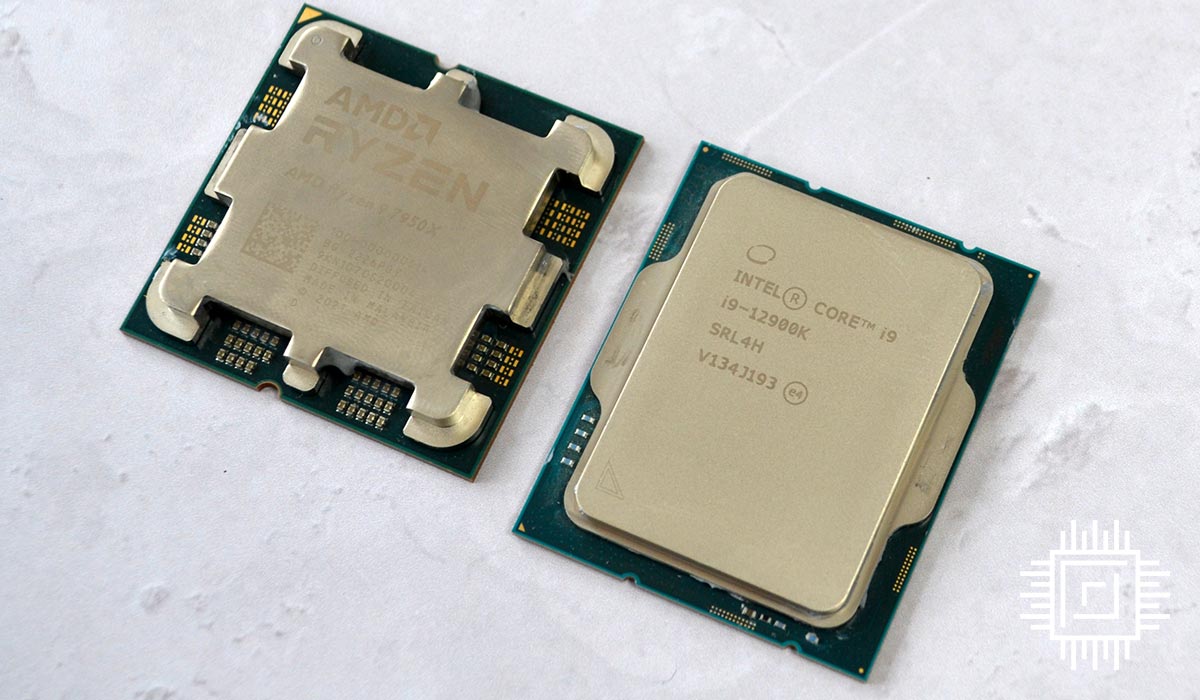Clock speeds will indeed be lower in multithreaded workloads with the bigger chip, but MT performance will still be higher, since by running at lower frequencies the cores will run at more efficient levels.
I think I understand the non-linear nature of the performance curve. That's why the i9k, even throttled down to lower power budgets, is faster both at single core AND (somewhat surprisingly) at multi-core workloads. Though there aren't a ton of articles making that comparison, sadly.
There are two things I still don't really get that I think are relevant to this conversation...
First, does PL1 have
anything to do with these performance results? Is that number meaningful anymore? From the introduction:
Unlike past generations of processors that were constrained by the Tau time value to hold maximum power draw, or PL2, Alder Lake processors now run at maximum power draw indefinitely if the load demands it and as long as the processor doesn't hit the thermal limit of 105°C. This is done without inventing a new system; Intel simply tweaked the PL1 and PL2 values and set them both to 241 W, which effectively means the processor can run at 241 W all the time as long as it doesn't overheat. The "125 W" limit now only exists on paper and in marketing documents.
So in all these tests,
unless specified otherwise, are we to assume that PL1=PL2=241w for i9k, PL1=PL2=190 for i7k, and PL1=PL2=150 for i5k? So in the results for this article, the PL1=PL2=125 gets
86% performance, and the i7k gets
90% —
but at PL1=PL2=190w — right?
And, how does the performance of the chips change when PL1 is different than PL2? Say, when PL1=90w (like in the oem HP)? Maybe that doesn't matter since all three are set at the same PL1=90?
Second — and I guess related to what I wrote above — what are there thermal differences between the three chips (i5k, i7k, i9k) when run
at the same power levels? Or, another way, can the i7k run at a higher power level holding heat constant? (I'm not even sure whether that would be PL1, PL2, or both?)
Can we assume that thermal load is highly correlated to power consumption? I mean, obviously yes, but HOW tightly bound is that correlation…? Let me collate some data and see if there are any inferences to be drawn...
System power levels + chip temp:
i7k (stock, 190w)……...56w idle….87w single…..221w multi…..234w stress…..64C
i9k (stock, 241w)……...56w idle…..91w single…..297w multi…..350w stress…..92C
i9k (throttled, 190w)………...n/a…………...n/a…..241w multi…..278w stress…..?
i9k (throttled, 125w)…..55w idle…………...n/a…..194w multi…..204w stress…..57C
i9k (throttled, 100w)………...n/a………….. n/a…..172w multi…..177w stress…..?
i9k (throttled, 75w)……...…...n/a…………..n/a…..146w multi…..147w stress…..?
i9k (throttled, 65w)…….54w idle…………..n/a…………….n/a…..138w stress…..38C
i9k (throttled, 50w)…………..n/a…………...n/a…..120w multi…..138w stress…..?
Well with only three data points we can clearly determine that the power level to thermal load curve for i9k is not linear. Doubling from 65w -> 125w yields a 20C rise. Doubling again from 125w -> 241w yields a 35C rise.
We know from the full i9k review that the i7k scores
64C under load. (Again, presumably PL1=PL2=190w.) We don't know what temp the i9k gets at that power level, but we know from
this club386 review that at 125w (I'm assuming PL1=PL2=125w?) the i9k is at
57C under load.
So I'm left with a few questions:
The throttled 190w i9k
system is consuming
more power than the stock 190w i7k
system, even when the chip is set at the same 190w power level. That's interesting, and honestly, unexpected? Doesn't that undercut the whole idea of power limiting?
Here's the nut — we don't know what the
temperatures are for the i9k at 190w or 100w. (Nor for the i7k.) I mean, 190w will be higher than 57C and closer to 92C than 57C. Presumably, higher than the 64C the i7k gets? And I assume the 75w and 100w temps will slot in between the 65w at 38C and the 125w at 57C?
I'm left with the gut feeling that while an i9k might be as fast or faster than an i7k at a constant power level, it will also (inexplicably?!) consume more system power and be hotter. I would like to hold the thermal limit constant, and then see what kind of performance the chips would give. If my inferences are vaguely right, then the i9k would be (slightly?) more throttled than the i7k, and that might erode the performance advantage we see at constant power levels?
And to bring it back around to the little HP SFF, the i7k stock is set to PL1=90 and PL2=190. The stock i9k is set to 90, 241. If I understand what PL1 does, both of those chips would be throttled down significantly under load to 90w. Which would generate-steady state temps well under 60C (I think?). But the i7k would be able to go
longer at the PL2 because it is overall a cooler chip than i9k at constant power…?
Might that explain what we see in the LTT video re. i7k outperforming the i9k?
Clear as mud, am I right? I have to admit I'm frustrated by this choice, even though I know the performances differences are almost certainly less than 10% either way, either single or multi, theoretically holding heat/noise constant.
So do I stick with the i9k, throttle it down to (whatever TBD) for low noise, and get the benefit of better single/low thread work but
maybe take a hit on higher load multi-thread usage? Or switch to the i7k, slower at single core but cooler, and therefore
maybe a touch better performing multi-core at the low noise ceiling???







